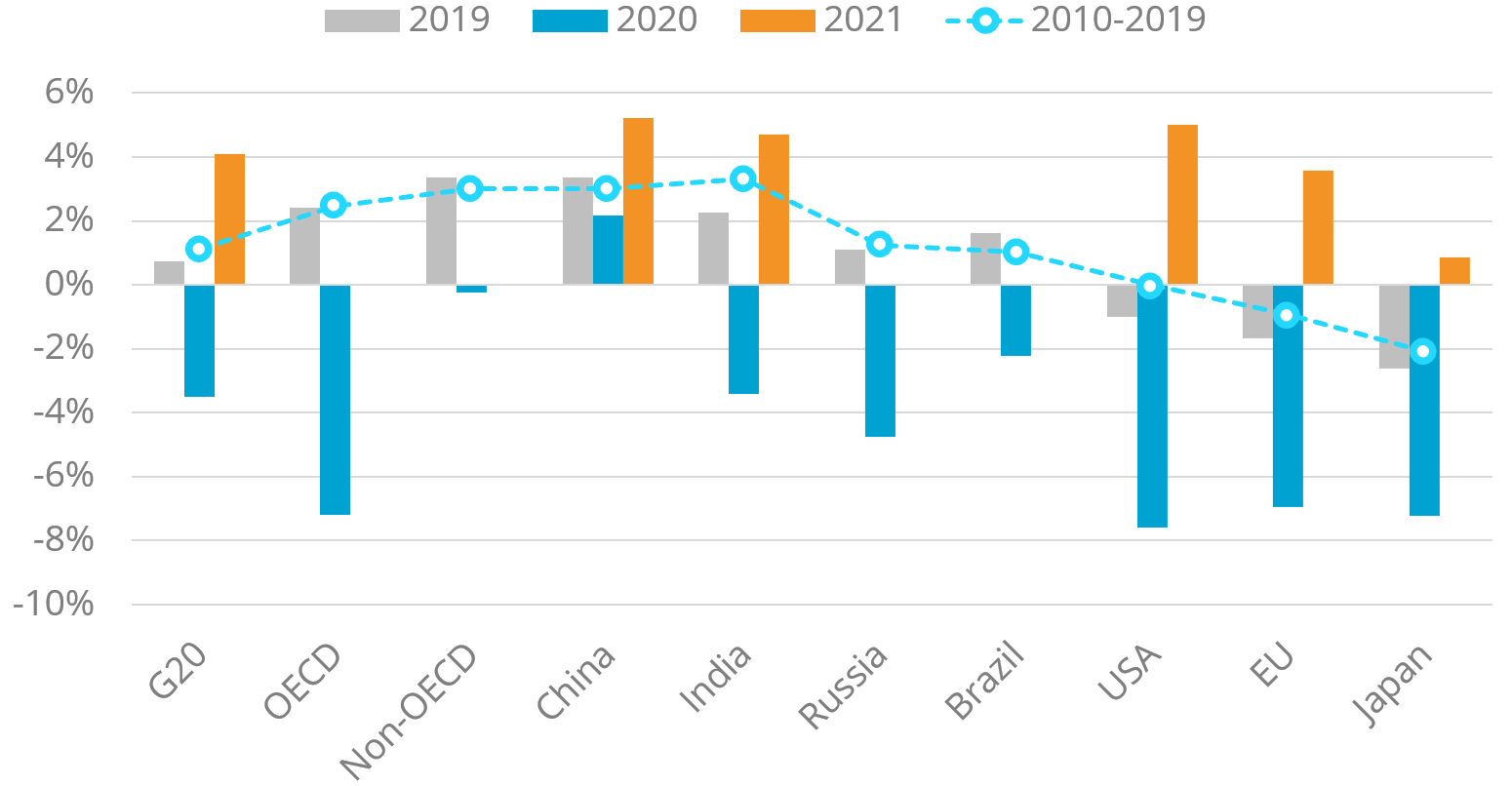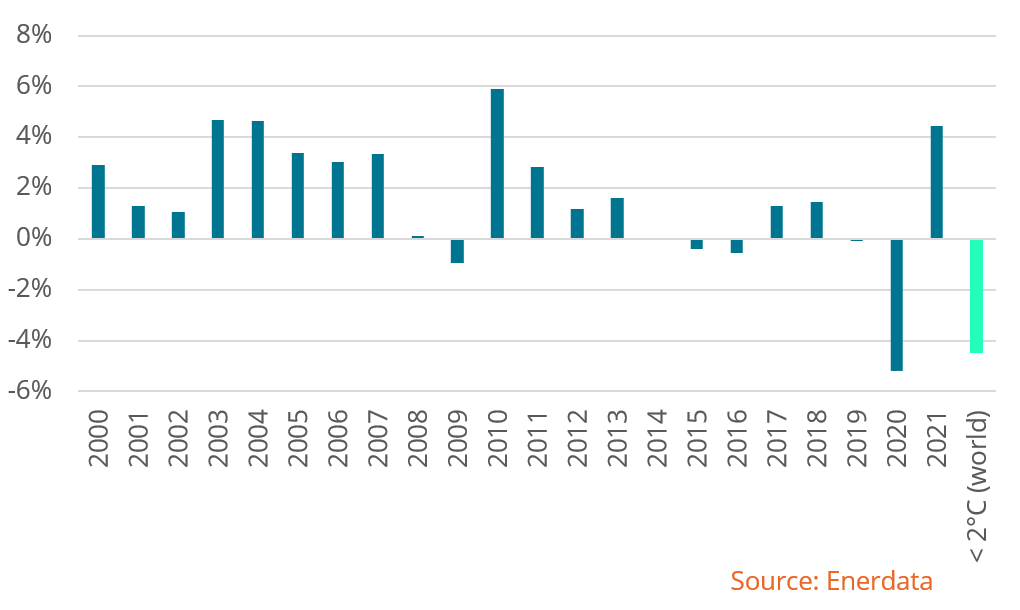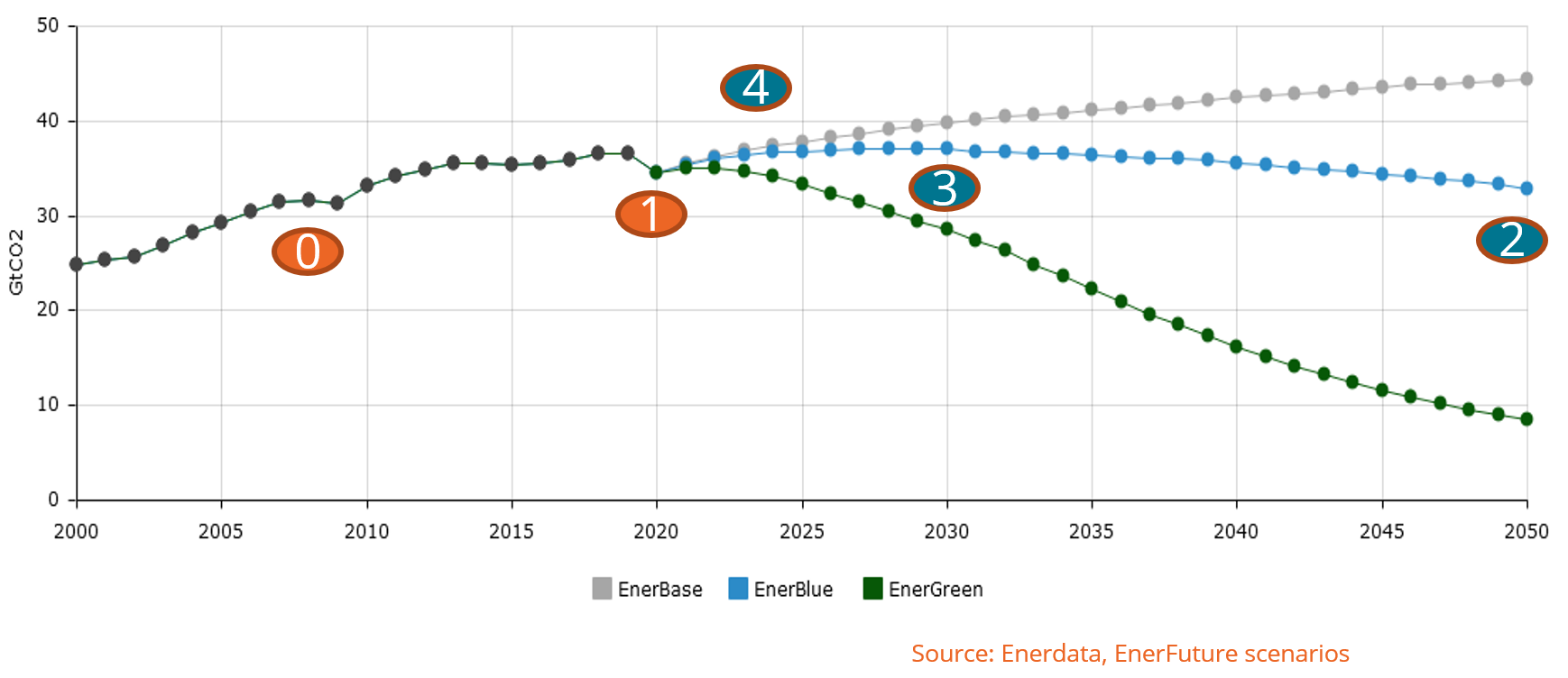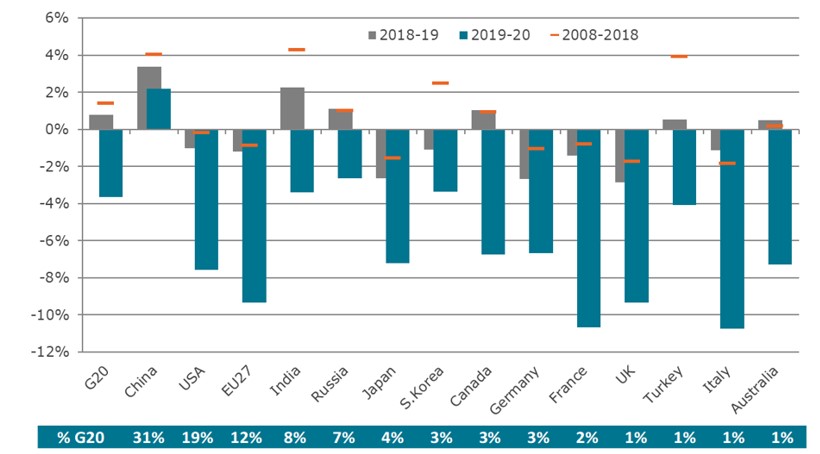Consolidated 2020 energy and emissions statistics with 2021 estimates, including Covid-19 impact and structural changes
Covid-19 heavily disrupted 2020, but its impact will stay cyclical, with energy consumption and emissions in 2021 slated to revert to historical trends.
- After a 3.5% drop in 2020, energy consumption is expected to rebound in 2021 with a 4.1% growth.
- With lockdown situations, CO2 emissions decreased by 5.2% in 2020, but the 2021 forecasts predict that the emission level will remain lower than in 2019.
- Our Global Energy Trends publication provides you with an in-depth analysis performed by our experts, leveraging our unique databases. What impact did Covid-19 have on energy and CO2 emissions and which structural changes are forecasted, caused or exacerbated by the pandemic?
- Which consequences will this have on 2030 and 2050 energy and climate targets?
2020 VS 2021 comparison of key energy figures for G20 countries
G20 countries account for 80% of global energy consumption
Figures in orange: data for 2021
Figures in blue: data for 2020
*CO2 emissions from energy combustion (> 80% of CO2 emissions)
Key Takeaways:
- During 2020, the global pandemic with lock down situations led to the worst economic crisis since the second world war.
- The effects were felt mainly in the tertiary sector, transport, and carbon-intensive electricity generation.
- New RES installed capacities (wind, solar PV) have been enjoying a higher growth rate during the crisis, which is expected to remain at this high level.
- But in 2021, the economy recovery is expected to be good in G20 countries, based on the first few months, as the GDP exceeds its 2019 value.
- Energy consumption drastically slowed down in 2020, except for China, but this was only a cyclical drop: in 2021 we are back to the 2019 energy consumption.
Total G20 energy consumption growth (%/year)

Source: Enerdata
The 2021 CO2 emission level so far is 1% below 2019 level
CO2-Energy related emissions

Source: Enerdata
As a result, by the end of 2021, energy efficiency and decarbonisation indicators will be still far from a 2 °C path to reach the Paris Agreement targets.
2030-2050: Pathways towards Net Zero Emission
Thanks to EnerFuture global energy forecasts, long-term energy consumption and CO2 emission trends have been forecasted through 3 scenarios:
- The grey curve is the scenario maintaining the existing policies and the actual trends.
- The blue curve is the scenario based on the successful achievement of NDCs (Nationally Determined Contributions) as defined after the COP-21 in Paris.
- The green curve is the scenario in which more stringent energy and climate policies are applied, with countries fulfilling their NDC commitments and then regularly revising their emissions goals.
Evolution of CO2-energy emissions - World

Source: Enerdata, EnerFuture scenarios
Key Takeaways:
- 0 - The historical trend in emissions continues on its upward track.
- 1 - The sharp fall in 2020 and the rebound in 2021 are essentially conjunctural.
- 2 - Are countries’ long-term targets compatible with 1.5-2 °C?
- 3 - Are the new 2030 targets consistent?
- 4 - What are the key levers and points to follow in 2021-2022?
To discover if the 2030-2050 estimates are matching the Net Zero Emission targets, access the full 2021 presentation.
Latest consolidated 2020 statistics – key figures
May 10, 2021

G20 energy consumption
G20 energy consumption was strongly impacted by the Covid-19 pandemic. A massive fall in oil and petroleum products consumption and a moderate one for gas and electricity stand in vivid contrast to the previous years’ growth trend. Coal consumption dropped for the second year in a row as the effects of the pandemic combined with those of coal exit policies.
G20 energy trends
Total energy consumption dipped by 3,6% in G20 countries and decreased almost everywhere. The one notable exception is China, which maintained a growth trend, though at a slower rate than in previous years.
Key figures in 2020
* Includes international air and sea transport (not included in country data).
 Energy and Climate Databases
Energy and Climate Databases Market Analysis
Market Analysis